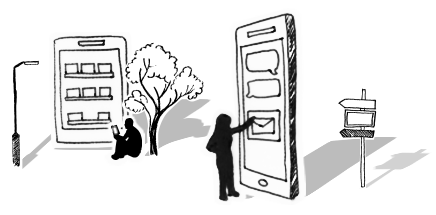




How to Embed Change and Finally Realise the Benefits
You’ve almost done it! After all the hard work, you’ve executed your change plan, colleagues know what to do and are bought in, the system and tools are ready and everything is set for go-live. You should feel excited, but you also know go-live isn’t the final hurdle: you need to ensure you can embed change.
This can feel daunting, especially if you have a change partner who is rolling off the project. You begin to ask yourself whether you have the expertise, tools and resources to drive full adoption. Change is ever-present, and you will need to manage your future change roadmap, perhaps without external guidance and support.
This was recently the case for a housing association, for whom Afiniti were the change partner. We had been working with them at the end of a 5-year effort to implement the largest Microsoft Dynamics rollout in Europe, and we were leaving the project a few weeks ahead of go-live having successfully delivered all the stakeholder business readiness activities. But our client had no fear, because the exit strategy we co-created empowered their leaders to thrive independently in the run-up to go-live and then beyond.
This insight will draw on that organisation’s experience to show you how to ensure a smooth exit from a change programme and set your team up for long-term, sustainable success. To read their story in full, take a look at our ERP implementation partner case study.
Transitioning to BAU – a key step
A smooth exit from a change programme should leave your organisation with the knowledge, confidence and competencies to sustain the changes implemented such that they become your business as usual [BAU]. Embedding them into your culture, processes and systems means you can ensure that they endure beyond the programme team or change partner’s involvement.
Nailing the transition to BAU will also uphold the positive attitudes your change management efforts nurtured towards your change; your people should continue to feel excited about it.
Longer term, your organisation will have retained the expertise, insights and lessons learned from the programme, so you can build on these foundations to strengthen your capacity to manage future change effectively and drive positive outcomes independently. Building that internal capability within our clients is an integral part of the support we provide, and our clients, including this housing association, close their change programmes with a new confidence to deliver change better than before.
Without a focus on this final stage, you might struggle to effectively complete the project exit plan, hand over responsibilities and documents and transfer knowledge, skills and insights. This creates ambiguity and confusion, missing documentation and gaps in understanding and capability, which reduces the organisation’s ability to continue delivering any future change roadmap.
How to successfully end your change programme
Exiting a change programme is a comprehensive task with several steps. Key stakeholders, including leaders and your change partner if you’ve used one, need to work together to ensure all required activities are completed in order to fully embed change.
Plan to:
- Enable knowledge transfer
- Mitigate risks
- Realise full benefits of the change being achieved and adopted
it is important to have a future change roadmap and plan. A strong plan, co-created and executed by you, will ensure that everyone is aligned and all key activities are completed while also demonstrating to the wider team, in what can be unnerving times, that all parties remain committed to the success of the change programme.
Build internal capability:
As mentioned, the role of a true change partner extends beyond simply implementing change; there should also be a great deal of effort towards building internal capability amongst the change sponsors, particularly as the programme closes. You will also need to ensure active involvement and visible support from senior leaders in championing the change.
Building internal capability by providing targeted training sessions and workshops helps develop skills and embed knowledge across key areas. These might include change management fundamentals, communication, engagement or leadership.
This enables your organisation to continue delivering change effectively while creating a culture where change is embraced.
Change Frameworks and Toolkits:
Your change toolkit should include the resources, tools and templates required to support the remainder of the programme and future change initiatives.
A comprehensive change framework provides structure and guidance for managing change effectively and should include sustainable tools along with guides that explain how to use them to help deliver change independently.
Celebrate Success:
Don’t forget to celebrate the milestones, achievements and progress from across the change programme before closing it. Celebrating success is crucial for reinforcing positive outcomes, boosting morale and building confidence in the internal team’s ability to deliver any future change successfully.
This also reinforces the importance of the change, encourages ongoing engagement and inspires continued commitment to achieving your business goals.
In Summary
A lot of work goes into planning and delivering change, but transitioning out of that change to BAU is not a step that should be taken lightly. A good change partner understands this and can ensure you get it right, equipping you and your team with the tools, skills and confidence you need to fully embed change and any future initiatives as well.
If you’d like to discuss how to ensure your programme will embed change, please get in touch and we’d be happy to learn more about your programme.
To get the latest change tips, advice and guidance directly to your inbox, sign up to our monthly Business Change Digest.
